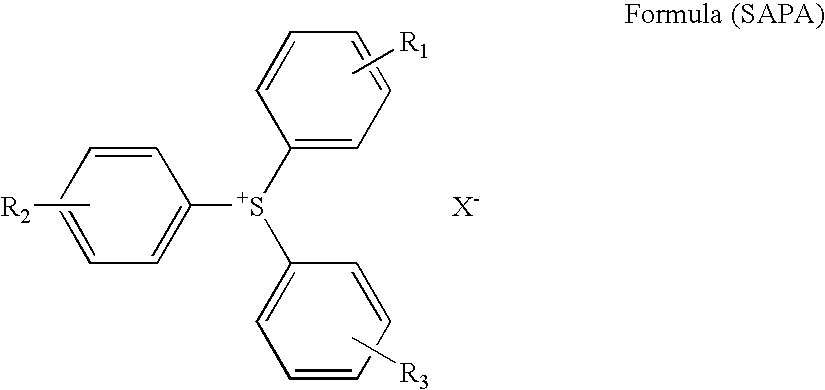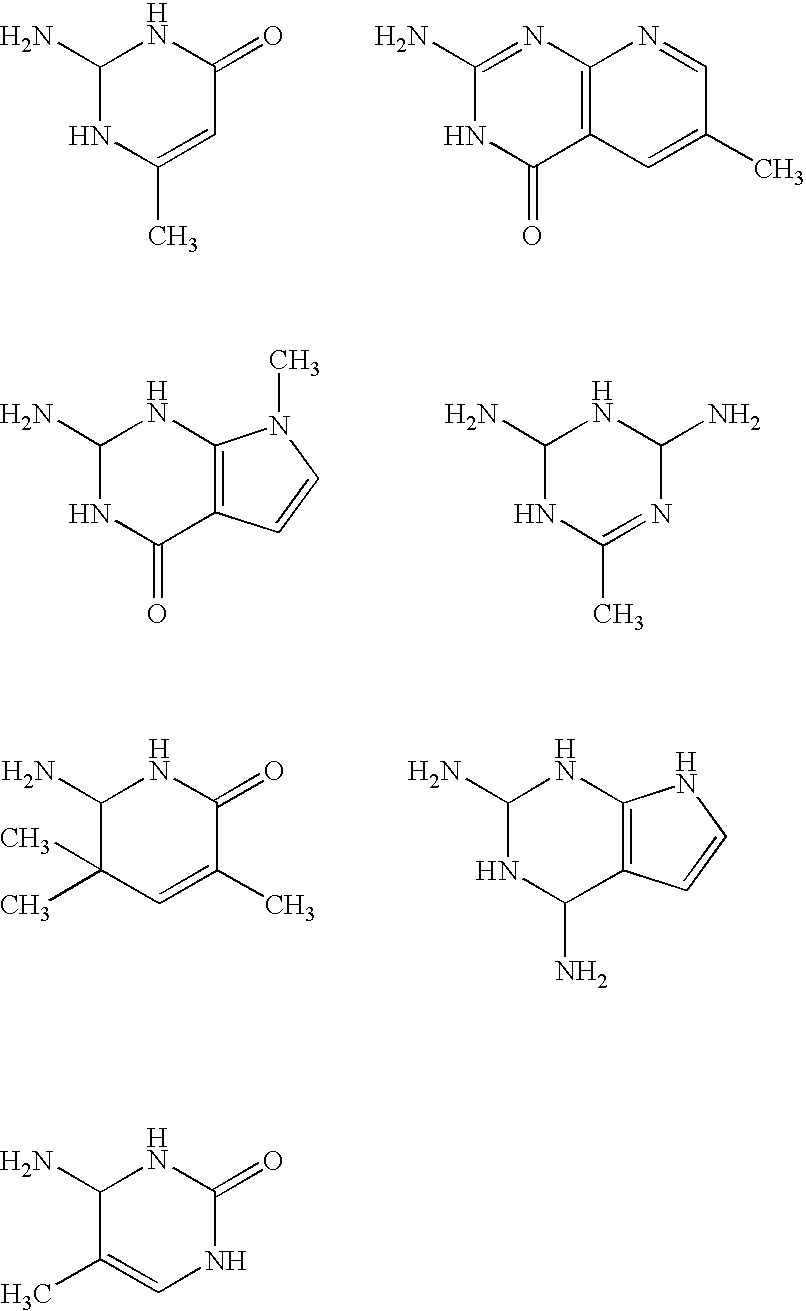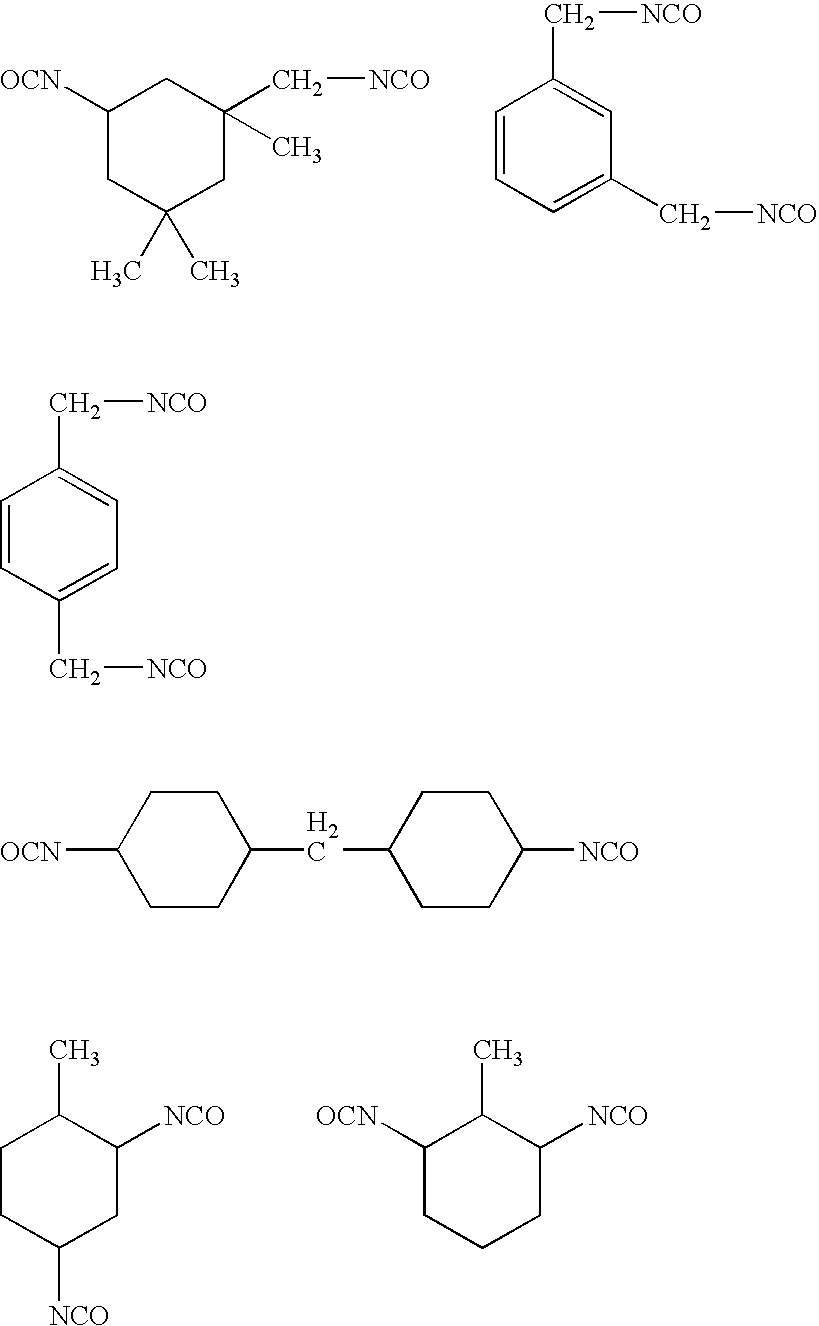Planographic printing plate material
a technology material, which is applied in the direction of lithography, photosensitive materials, instruments, etc., can solve the problems of narrow development latitude, insufficient sensitivity and inconvenient processing of planographic printing plate material under yellow light, etc., to achieve excellent chemical resistance, excellent sensitivity, and excellent layer thickness reduction resistance
- Summary
- Abstract
- Description
- Claims
- Application Information
AI Technical Summary
Benefits of technology
Problems solved by technology
Method used
Image
Examples
example 1
(Preparation of Support)
Preparation of Supports 1 and 2
[0316]A 0.24 mm thick aluminum plate (material 1050, refining H16) was immersed in an aqueous 5% by weight sodium hydroxide solution at 50° C. to give an aluminum dissolution amount of 2 g / m2, washed with water, immersed in an aqueous 10% by weight nitric acid solution at 25° C. for 30 seconds to neutralize, and then washed with water.
[0317]Subsequently, the aluminum plate was subjected to electrolytic surface-roughening treatment in an electrolytic solution containing 10 g / liter of hydrochloric acid and 0.5 g / liter of aluminum at a current density of 60 A / dm2 employing an alternating current with a sine waveform, in which the distance between the plate surface and the electrode was 10 mm. The electrolytic surface-roughening treatment was divided into 12 treatments, in which the quantity of electricity used in one treatment (at anodic time) was 80 C / dm2, and the total quantity of electricity used (at anodic time) was 960 C / dm2....
example 2
Preparation of Modified Novolak Resins
(Modified Novolak Resin B)
[0331]Dry N,N-dimethylacetoamide of 29.8 g and 5.0 g (0.035 mol) of 4-aminouracil were placed in a 50 ml reaction vessel equipped with a drying tube and a thermometer, and 7.8 g (0.035 mol) of isophorone diisocyanate were dropwise added in ten minutes thereto. Subsequently, 0.05 g of dibutyl tin dilaurate were added as a catalyst to the resulting solution, and then stirred for 5 days at 60° C. to obtain a solution containing a urethane intermediate with a free isocyanate group. The reaction process was confirmed according to a high speed liquid chromatography. The resulting urethane intermediate solution was tightly sealed under nitrogen gas atmosphere and stored.
[0332]Subsequently, 72 g of dry N,N-dimethylacetoamide and 20.0 g of novolak resin 1 described previously were placed in a 200 ml reaction vessel under a dry nitrogen gas atmosphere to obtain a novolak resin solution. The novolak resin 1 solution was heated to ...
PUM
| Property | Measurement | Unit |
|---|---|---|
| visible wavelength | aaaaa | aaaaa |
| alkali soluble | aaaaa | aaaaa |
| acid | aaaaa | aaaaa |
Abstract
Description
Claims
Application Information
 Login to View More
Login to View More - R&D
- Intellectual Property
- Life Sciences
- Materials
- Tech Scout
- Unparalleled Data Quality
- Higher Quality Content
- 60% Fewer Hallucinations
Browse by: Latest US Patents, China's latest patents, Technical Efficacy Thesaurus, Application Domain, Technology Topic, Popular Technical Reports.
© 2025 PatSnap. All rights reserved.Legal|Privacy policy|Modern Slavery Act Transparency Statement|Sitemap|About US| Contact US: help@patsnap.com



